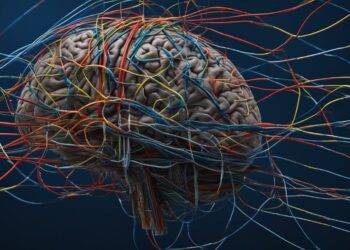In today’s fast-paced world, stress has become an inevitable part of our lives. We all experience different types of stress on a daily basis, be it work-related or personal.
Unfortunately, if not managed properly, stress can lead to a host of physical and mental health problems like anxiety, depression, insomnia and high blood pressure. One effective method for reducing stress is Autogenic training.
Definition of Autogenic Training
Autogenic training is a relaxation technique that involves self-hypnosis to achieve deep relaxation in the body and mind. It was developed by German psychiatrist Johannes Heinrich Schultz in the 1920s. The technique involves the repetition of mental phrases such as “my right arm is heavy” or “my heartbeat is calm,” which help the individual focus their attention on different parts of their body and attain relaxation.
Historical background and development of Autogenic Training
The concept of using mental imagery for relaxation dates back to ancient civilizations like Egypt and Greece. However, it was Schultz who developed the technique into a structured system with exercises that could be learned systematically over time.
Schultz initially practiced hypnosis in his psychiatric clinic but later discovered that he could teach his patients self-hypnosis techniques for achieving relaxation without requiring a therapist’s intervention. He found that this method could reduce stress levels significantly and thus coined the term “autogenic training.”
Benefits of practicing Autogenic Training
The benefits of autogenic training are numerous – from reducing anxiety to improving sleep quality – making it one of the most popular relaxation techniques worldwide. Some common benefits include:
– Reduced levels of anxiety – Improved sleep quality
– Lowered blood pressure – Reduced muscle tension
– Increased self-awareness In addition to these benefits, autogenic training is a safe and non-invasive technique that is easy to learn, making it accessible to anyone looking for ways to manage their stress levels.
The Science behind Autogenic Training
Autogenic Training is a relaxation technique based on self-hypnosis that involves the use of autosuggestion to direct attention to specific parts of the body, resulting in decreased muscle tension and increased feelings of relaxation. It is a highly effective technique for reducing stress and anxiety, improving sleep quality, and enhancing overall well-being.
The autonomic nervous system and its role in stress response
The autonomic nervous system (ANS) plays a crucial role in the body’s response to stress. It is responsible for regulating various bodily functions, such as heart rate, blood pressure, and breathing rate.
The ANS has two main branches: the sympathetic nervous system (SNS) and the parasympathetic nervous system (PNS). The SNS is responsible for triggering the “fight or flight” response when faced with a stressor.
This response increases heart rate and breathing rate while decreasing digestion and immune function. The PNS, on the other hand, activates the “rest and digest” response, which promotes relaxation and recovery.
The relaxation response and its physiological effects on the body
The relaxation response is a state of deep relaxation that counteracts the effects of stress on the body. It is characterized by decreased muscle tension, heart rate, blood pressure, respiratory rate, oxygen consumption, metabolic rate, and increased alpha brain wave activity. The relaxation response has been found to have numerous health benefits such as reducing anxiety disorders including panic attacks.
How Autogenic Training activates the relaxation response
Autogenic training works by directing attention to specific parts of the body through visual imagery or verbal suggestion thereby activating different components of both physical exertion as well as mental exercises that promotes active physical arousal including blood flow regulation which can help reduce pain levels too.
Once activated these parts send signals to relevant regions in our brain and activates the parasympathetic nervous system.
This results in muscle relaxation, decreased heart rate, blood pressure, and respiratory rate, promoting a sense of calmness and well-being. Autogenic Training is an effective technique for reducing stress and anxiety, improving sleep quality, and enhancing overall well-being.
By activating the relaxation response through directed focus on specific body parts, Autogenic Training promotes deep relaxation that counteracts the effects of stress on the body. With practice, individuals can learn to control their physiological responses to stress and improve their physical and mental health.
The Techniques of Autogenic Training
Six Basic Exercises
1) Heaviness
The first basic exercise in Autogenic Training is the sensation of heaviness. In this exercise, the individual focuses on the sensation of their limbs becoming heavy and sinking into the surface they are resting on.
This exercise helps to induce a feeling of relaxation and can be particularly helpful for individuals experiencing tension in their muscles. To practice this exercise, begin by sitting or lying down comfortably.
Focus on your limbs and imagine them growing heavier with each breath you take. Visualize them sinking into the surface you are resting on, feeling supported and relaxed.
2) Warmth
The second basic Autogenic Training exercise is focused on generating warmth within the body. The sensation of warmth can help to soothe physical tension and promote relaxation throughout the body. To practice this exercise, start by visualizing a warm sensation in your hands.
Imagine that warmth spreading throughout your entire body, from your fingertips to your toes. Focus on deepening this warm feeling with each breath you take.
3) Heartbeat
The third basic Autogenic Training technique involves focusing on the rhythm of one’s heartbeat. This technique can be especially useful for individuals experiencing anxiety or nervousness.
To practice this technique, sit or lie down comfortably and focus on your heartbeat. Imagine it slowing down with each breath you take until it becomes steady and calm.
4) Breathing
Breathing exercises are used in many forms of meditation and relaxation practices including Autogenic Training. Focusing on breathing helps to slow down racing thoughts and promote relaxation. To practice this exercise, sit or lie down comfortably and focus solely on your breaths as they enter and exit your body.
Take deep breaths that fill up your lungs completely and exhale slowly. With each exhale, visualize the tension leaving your body.
5) Abdominal Warmth
The fifth basic Autogenic Training technique involves focusing on warmth in the abdominal area. This exercise can help to relieve stress and tension in that area of the body.
To practice this exercise, close your eyes and focus on a warm feeling spreading throughout your abdomen. Imagine it growing warmer with each breath you take and visualize any stress or tension melting away.
6) Forehead Coolness
The sixth basic Autogenic Training exercise involves a sensation of coolness on the forehead. This technique can be useful for individuals experiencing headaches or feelings of mental pressure. To practice this exercise, imagine a cool sensation spreading throughout your forehead.
Focus on deepening this sensation with each breath you take until it becomes more prominent and soothing. Visualize any mental pressure or headaches dissipating as you practice this technique.
Advanced Techniques of Autogenic Training
Imagery exercises to enhance relaxation and visualization skills
Autogenic training is a therapeutic technique that often involves the use of imagery exercises to enhance relaxation and visualization skills. Imagery can be defined as the creation or recreation of sensory experiences in one’s mind.
Autogenic training uses auditory cues, such as a recording or guided meditation, to help individuals envision calming scenarios, such as floating on a cloud or relaxing by the beach. These exercises allow individuals to increase their sense of control over their own physical and emotional responses.
One common imagery exercise used in autogenic training is progressive muscle relaxation (PMR). PMR involves tensing each muscle group in the body for several seconds before relaxing them.
As individuals go through the exercise, they may visualize releasing stress and tension from each muscle group. Other examples of imagery exercises include visualizing positive outcomes in stressful situations, imagining oneself performing well in a difficult task, or focusing on a peaceful image.
Combination techniques for specific purposes such as pain management or anxiety reduction
Autogenic training can be combined with other therapies for specific purposes such as pain management or anxiety reduction. For instance, autogenic training has been shown to reduce chronic pain associated with conditions like fibromyalgia and irritable bowel syndrome (IBS). In combination with cognitive-behavioral therapy (CBT), autogenic training has also been used to treat anxiety disorders.
One such combination technique is called cognitive restructuring, which helps individuals identify negative thought patterns that contribute to anxiety or stress. With cognitive restructuring and autogenic training together, an individual can learn how to alter those thought patterns by replacing them with more positive ones while practicing deep relaxation techniques simultaneously.
Another combination technique involves exposure therapy which exposes the individual gradually to situations that increase their level of fear over time while using Autogenic Training Techniques to help them manage their emotional response. This process helps people overcome phobias, PTSD, and other anxiety disorders.
The importance of practicing Advanced Techniques
It is important to practice advanced Autogenic training techniques regularly to reap the full benefits of this therapy. Consistent practice can help individuals develop positive coping strategies that will enhance their overall well-being. Each individual may experience different responses and therefore should personalize their treatment plan accordingly.
These advanced techniques can be practiced alone or with a therapist’s guidance in a group or individual session. It is important for individuals undergoing autogenic training therapy to work closely with their health care providers and mental health professionals in order to make sure that they are using these techniques safely and properly.
Autogenic training offers many advanced techniques for enhancing relaxation and visualization skills, as well as for managing pain, reducing anxiety, and other specific purposes. Imagery exercises like progressive muscle relaxation (PMR) can help individuals increase control over their physical response while exposure therapy combined with Autogenic Training Techniques can help manage emotional responses.
Nonetheless, it is important for individuals to work closely with a healthcare provider or mental health professional when practicing these techniques to ensure safety and proper implementation of the methods.
Applications of Autogenic Training in Daily Life
Stress Management Techniques for Work, School, or Home Life
Autogenic Training can be a powerful tool for managing stress in daily life. The relaxation techniques used in Autogenic Training have been shown to reduce levels of cortisol, the hormone released during the body’s stress response.
Regular practice of Autogenic Training can help individuals better manage their stress levels by allowing them to enter a relaxed state more quickly and easily. Incorporating Autogenic Training into one’s daily routine can be as simple as taking a few minutes each day to practice the basic exercises.
These exercises can be done anywhere, making it easy to integrate into even the busiest of schedules. By practicing these techniques regularly, individuals may find they are better able to handle stressful situations without becoming overwhelmed.
Improving Sleep Quality through Relaxation Exercises before Bed
Autogenic Training has also been shown to improve sleep quality by reducing tension and promoting relaxation. Many individuals experience difficulty falling asleep due to an inability to relax both physically and mentally.
By practicing Autogenic Training before bed, individuals may find it easier to relax their bodies and minds, leading to improved sleep quality. The abdominal warmth exercise is particularly effective for promoting relaxation before bedtime.
By focusing on the sensation of warmth in the abdomen, individuals can enter a state of deep relaxation that makes falling asleep easier. Additionally, combining this exercise with other relaxation techniques such as deep breathing or visualization can further enhance its effectiveness.
Enhancing Athletic Performance through Visualization Techniques
Visualization is a powerful tool for enhancing athletic performance by helping athletes develop mental toughness and focus. In combination with Autogenic Training techniques such as breathing exercises or muscle relaxation exercises (such as “heaviness”), visualization can help athletes improve their physical performance on the field or court.
By visualizing themselves successfully executing specific athletic movements, athletes can improve their muscle memory and reduce anxiety or nervousness during competition. Visualization can also help athletes stay focused on their goals and maintain a positive mindset during training and competition.
Autogenic Training for Coping with Chronic Pain
In addition to its applications for stress management, sleep improvement, and athletic performance enhancement, Autogenic Training has also been shown to be effective in managing chronic pain. By teaching individuals how to redirect their focus away from pain sensations and towards relaxation techniques, Autogenic Training can help reduce the perception of pain. The “warmth” exercise is particularly effective for managing pain.
By focusing on the sensation of warmth in a specific area of the body (such as the site of chronic pain), individuals can experience relief from their symptoms. Additionally, combining this exercise with other techniques such as deep breathing or imagery exercises can further enhance its effectiveness.
Autogenic Training is a powerful tool that can be applied to many aspects of daily life. From stress management to improving sleep quality and athletic performance, Autogenic Training offers a range of benefits for individuals looking to enhance their physical and mental wellbeing.
Its effectiveness in managing chronic pain makes it an especially valuable technique for those living with long-term health conditions. With regular practice, Autogenic Training has the potential to improve overall quality of life by promoting relaxation and reducing stress levels.
Criticisms and Limitations of Autogenic Training
Lack of scientific evidence supporting its effectiveness
Despite the many benefits that have been attributed to Autogenic Training, there is a lack of scientific evidence to support its effectiveness. Some studies have shown positive results, while others have found no significant changes in symptoms or health outcomes.
Critics argue that the lack of rigorous scientific research makes it difficult to determine whether Autogenic Training is truly effective or simply a placebo effect. One issue with the research on Autogenic Training is the small sample sizes used in many studies.
This makes it difficult to draw conclusions about the effectiveness of the technique for larger populations. Additionally, many studies have not used control groups or randomized participants, further limiting their ability to accurately measure the effects of Autogenic Training.
Another factor contributing to the lack of scientific evidence is the difficulty in measuring outcomes related to stress reduction and relaxation. These concepts are subjective and can vary widely among individuals, making it challenging to quantify improvements in these areas.
Potential negative side effects such as increased anxiety or panic attacks
While Autogenic Training has been touted as a safe and non-invasive relaxation technique, there are potential negative side effects that should be considered. One concern is the possibility of increased anxiety or panic attacks for some individuals during or after practicing Autogenic Training.
Research has shown that certain relaxation techniques can trigger anxiety symptoms in individuals with pre-existing anxiety disorders.
For example, focusing on bodily sensations such as heartbeat or breathing can be distressing for some people and lead to increased feelings of anxiety. Additionally, if individuals practice Autogenic Training incorrectly or without proper guidance from a qualified professional, they may experience negative side effects such as dizziness or nausea.
It is important for individuals interested in practicing this technique to receive proper training and guidance from a qualified practitioner. Overall, while Autogenic Training has many potential benefits, it is important to consider the potential negative side effects and lack of scientific evidence when deciding whether or not to use this technique as part of a stress reduction or relaxation plan.
Practicing Autogenic Training regularly has been shown to reduce stress levels and improve overall well-being. This technique can be used in various settings such as work, school or home life.
It can also be used to improve sleep quality and enhance athletic performance through visualization techniques. Although there are potential negative side effects if practiced improperly or without proper guidance from a trained professional, Autogenic Training has great potential for individuals who want to improve their mental and physical health.
Future directions for research on Autogenic training
Research on Autogenic training has been limited but promising results have been found in studies conducted on this topic. More research needs to be done into the mechanisms by which it works and how it compares with other forms of relaxation techniques.
Future studies should consider conducting randomized controlled trials with larger sample sizes across different age groups to investigate the long-term effects of practicing autogenic training.
Additionally, exploring the efficacy of combining autogenic training with other interventions such as cognitive-behavioral therapy or mindfulness-based stress reduction could yield valuable results. As technology continues to develop, mobile apps or virtual reality platforms could also offer innovative ways for individuals to practice autogenic training remotely.
While there is still much we do not know about autogenic training its benefits have already been proven in numerous studies. With its relatively low cost and lack of side effects this technique holds great promise for improving mental health outcomes across diverse populations.




























































